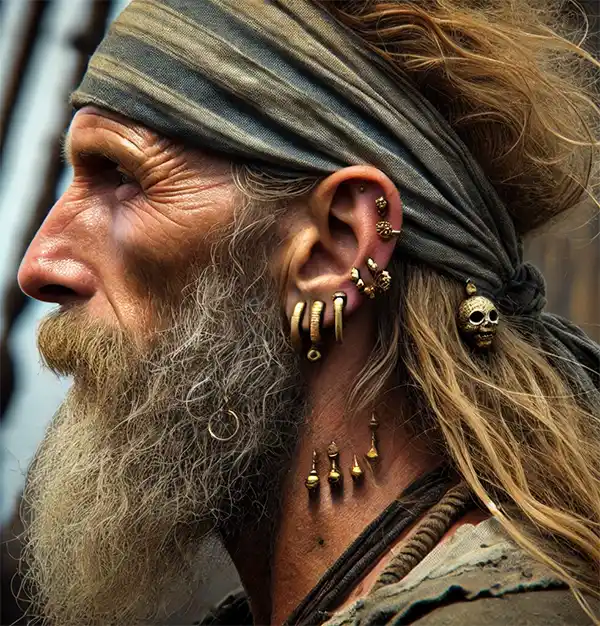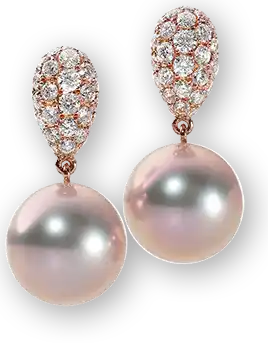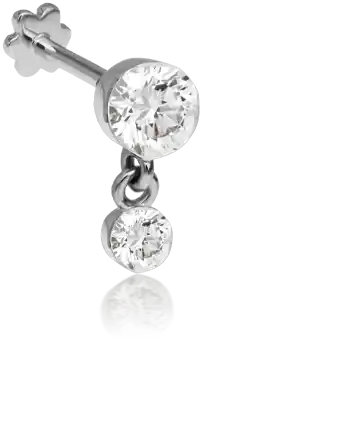A Tale As Old as Time
Ear piercing might seem like a modern fashion trend, but it's actually older than your great-great-grandmother’s doilies. Archaeological evidence suggests that people were adorning their ears with shiny objects as far back as 5,000 years ago. Otzi the Iceman, that well-preserved chap from the Copper Age, was found with pierced ears—clearly ahead of his time in more ways than one. Fast forward a few millennia, and ear piercing has gone through more phases than the moon. From ancient Egyptians who thought earrings were a symbol of wealth and status, to sailors who wore them as talismans against drowning, the practice has had as many purposes as it has styles.

Types of Ear Piercings
When you think of ear piercing, you might picture a simple stud on the lobe. But hold onto your earrings because the world of ear piercing is far more diverse! Here’s a quick rundown of the types that might tempt you this Pierce Your Ears Day:
- Lobe Piercing: The classic. It’s like the vanilla ice cream of piercings—simple, sweet, and goes with everything.
- Helix Piercing: For those who think the upper ear needs some love too. A bit more daring, but perfect for showing off your edgy side.
- Tragus Piercing: Located on that little flap in front of your ear canal, this piercing is for those who want to make a small, but powerful statement. It also comes with a free challenge: trying to explain where it is without pointing to your ear.
- Industrial Piercing: Not for the faint of heart, this one connects two piercings in your upper ear with a single, bold barbell. It’s like the suspension bridge of ear piercings.
- Daith Piercing: Nestled in the innermost fold of your ear, some say this piercing can help with migraines. Whether it’s true or just a placebo, at least your ear will look stylish while you find out.
The Process
Deciding to get your ears pierced is a big step. It’s like getting a pet—only this one won’t chew your furniture. Here’s what you can expect on the big day:
- The Preparation: First, you’ll need to choose a reputable piercer. This is not the time to bargain hunt on eBay. Look for someone who has more certificates than a Wall Street banker, and whose equipment shines like a polished mirror.
- The Piercing: You’ll sit in the chair, and the piercer will mark your ear with a pen. At this point, you might start questioning your life choices. But fear not! It’s over in a flash—just a quick pinch, and voilà, you’re officially part of the pierced club.
- The Aftercare: After the deed is done, you’ll be sent home with a list of aftercare instructions that might as well be written by NASA. Clean your piercing with saline solution, avoid sleeping on it, and whatever you do, resist the urge to fiddle with it! Your ear is now a no-touch zone.
Things They Don’t Tell You
Once your ears are pierced, the healing process begins. It’s like the awkward teenage years of your ear’s life. You’ll go through stages, including:
- The "Is This Normal?" Stage: Your ear might feel warm, tender, and maybe even a little itchy. You’ll find yourself googling, “Is my ear supposed to be this red?” about 25 times a day.
- The Jewelry Obsession Stage: You’ll start noticing earrings everywhere. You’ll spend hours online shopping for the perfect pair, only to remember that you can’t change your earrings for six weeks. Patience, young grasshopper.
- The Pride Stage: Once your piercing is fully healed, you’ll proudly display your new earrings like badges of honor. You might even consider adding a few more—after all, who needs just one hole when you can have a constellation?
 A Global Phenomenon
A Global Phenomenon
Ear piercing isn’t just a fashion choice—it’s a cultural tapestry woven through the history and traditions of societies across the globe. From the ornate ear ornaments of ancient civilizations to the modern-day piercing trends seen in urban centers, the practice of ear piercing has taken on many forms and meanings, often serving as a powerful symbol of identity, status, and even spirituality.
In India, ear piercing, or Karnavedha, is a sacred ritual deeply embedded in Hindu culture. This ceremony, traditionally performed on both boys and girls at a young age, is believed to open the inner ear to receive sacred sounds, enhancing one’s spiritual growth and overall well-being. The process is often accompanied by prayers and rituals, signifying the importance of this rite of passage.
Moving to Africa, the tradition of ear stretching is prevalent among several tribes, such as the Maasai and the Mursi. Here, the size of the ear jewelry often correlates with social status, beauty, and maturity. These ear piercings aren’t just about aesthetics; they serve as living records of an individual’s journey through life, with each stretch or adornment representing significant milestones.
In Southeast Asia, particularly in Borneo, ear piercing is more than just a personal choice—it’s a communal one. Among the Dayak people, elongated earlobes are seen as a mark of beauty and wisdom. The process of ear stretching is gradual, beginning at a young age and continuing throughout one’s life. The heavy brass or copper earrings worn by elders are not only beautiful but are also believed to symbolize the weight of their knowledge and experience.
In Western cultures, the practice has evolved dramatically over time. From the rebellious spirit of the 1970s punk movement, where multiple ear piercings were seen as a form of anti-establishment expression, to today’s diverse piercing culture that embraces everything from minimalistic studs to intricate ear constellations, ear piercing continues to be a versatile form of self-expression. The trend of curating “earscapes,” where individuals mix and match different styles of piercings to create a personalized ear aesthetic, is a testament to the creativity and individuality that modern piercings allow.
Meanwhile, in Latin America, particularly in countries like Mexico, ear piercing is often a family tradition passed down through generations. Newborns are commonly pierced soon after birth, with tiny gold studs adorning their ears as a symbol of protection and good fortune. This practice is so ingrained in the culture that it’s almost a rite of passage for parents and their newborns alike.
Even in regions like the Middle East, ear piercing holds deep cultural significance. For many, it’s not just about beauty; it’s a tradition rooted in religious beliefs and social customs. In some communities, the choice of ear jewelry can indicate a person’s marital status, wealth, or even their role within the family.
Across the globe, the styles, methods, and meanings of ear piercing are as varied as the cultures they originate from. Whether it's the spiritual connotations in India, the societal markers in Africa, or the creative expression in the West, ear piercing remains a universal practice that transcends borders, connecting people through a shared yet diverse cultural heritage.
On Pierce Your Ears Day, celebrating this global phenomenon reminds us of the rich cultural traditions behind this seemingly simple act. So, whether you're piercing your ears for the first time or adding to your collection, you're participating in a ritual that has united humanity for millennia—one tiny hole at a time.
Get Creative
If you’re feeling adventurous this Pierce Your Ears Day, why not get creative with your ear adornments? Try something new, like a mix-and-match set of earrings, or experiment with cuffs and climbers. If you’re not ready to commit to a new piercing, you can always opt for clip-ons—they’re like the training wheels of the earring world.
And if piercing your ears isn’t on your agenda, you can still celebrate by helping a friend take the plunge. Offer moral support, hold their hand, or simply be there to say, “I told you it wasn’t that bad,” after it’s all over.
 Piercing Through the Myths
Piercing Through the Myths
Ear piercing is more than a trend—it’s a timeless tradition that’s evolved over thousands of years. Whether you’re getting your first lobe piercing or adding a new piece to your ear’s jewelry collection, Pierce Your Ears Day is the perfect opportunity to celebrate this ancient art form. So, go forth, get pierced (or not), and wear those earrings with pride. Just remember: when it comes to ear piercings, the only limit is your imagination—and maybe your pain tolerance.
Happy Pierce Your Ears Day!
Please Share our Content







 A Global Phenomenon
A Global Phenomenon Piercing Through the Myths
Piercing Through the Myths








 "Sláinte!" is a traditional Irish expression used as a toast, equivalent to "Cheers!" in English.
"Sláinte!" is a traditional Irish expression used as a toast, equivalent to "Cheers!" in English.